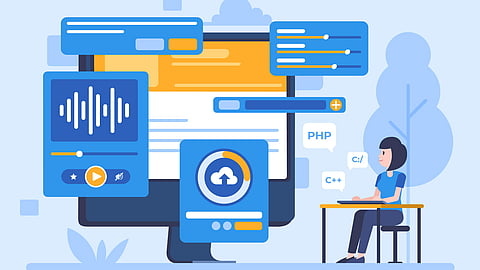Rethink Publishing With Digital Experience Platforms
Written by : Rashmi Singh
From plain text to really immersive content, digital publishers have come a long way. But their journey does not stop there. If publishers want to keep thriving, they have to give the best experience to their consumers. This is exactly where digital experience platforms come into the picture.
Digital experience platforms or DXPs is a hot topic in the publishing world right now. Some do not understand what it is while others are already thinking that DXPs can overhaul publishing processes. In this article, we are going to discuss how DXPS can aid in rethinking publishing. Let’s start with the basics first.
What Are Digital Experience Platforms?
Digital experience platforms can be understood as a set of tools that helps businesses in building, managing, delivering, and optimizing digital experiences for their customers. The tools and technology need to be seamless both for customers and businesses.
DXPs can be used by any type of business such as an e-commerce business, consultancy business, or digital publisher. Publishers used to focus just on creating quality content a few years back. But with business models getting more and more sophisticated, publishers have now realized that they must focus on their consumers’ experience if they want to thrive.
Rethinking Publishing
Traditional CMSs can deliver content on a single platform without any hitch. But they fall short when it comes to delivering digital experience across multichannel channels. For that, publishers can use digital experience platforms.
Digital experience is not just about publishing high-quality articles and news pieces on the website and app. Onboarding emails, social media image captions, and subtitles on a YouTube video too are a part of the digital experience. In this day and age, consumers expect meaningful touchpoints from your brand on every platform.
A digital experience platform can be one piece of software or a set of many digital tools. Generally, a headless CMS lies at the core of every DXP as it is responsible for the most important publication process – creating content. Along with content creation, DXPs include CRM tools, digital analytics tools, personalization and automation tools, A/B test tools, and so on. All these tools work in tandem with each other to provide a smooth digital experience.
Difference Between DXPs and CMSs
At the surface, DXPs might seem like CMSs with more capabilities but that is not true. Digital experience includes not just serving content but taking care of every touchpoint – from first to last – through the whole customer/consumer journey with your brand.
The first touchpoint generally happens when a consumer visits your website. The next touchpoint could be clicking on another piece of content, signing up for your newsletter, or even buying a subscription to read a premium article.
If a consumer buys a digital subscription, making the payment on your website or app becomes another touchpoint. This is where CMSs take the backseat while other tools of DXPs like payment gateways and CRM come forward.
That being said, CMSs are the single most important piece of software in the whole DXP suite. A CMS needs to be flexible enough so that it can connect with other tools through APIs and it also needs to be user-friendly enough so that the content creator does not get overwhelmed while producing content for multiple channels.
If you are thinking of updating your publication stack, Quintype can help you. We provide a complete suite of digital publishing tools including a headless CMS that understands your content, an audience engagement platform, a robust content monetization platform, and much more. Click here to know more about our digital publication solutions.

